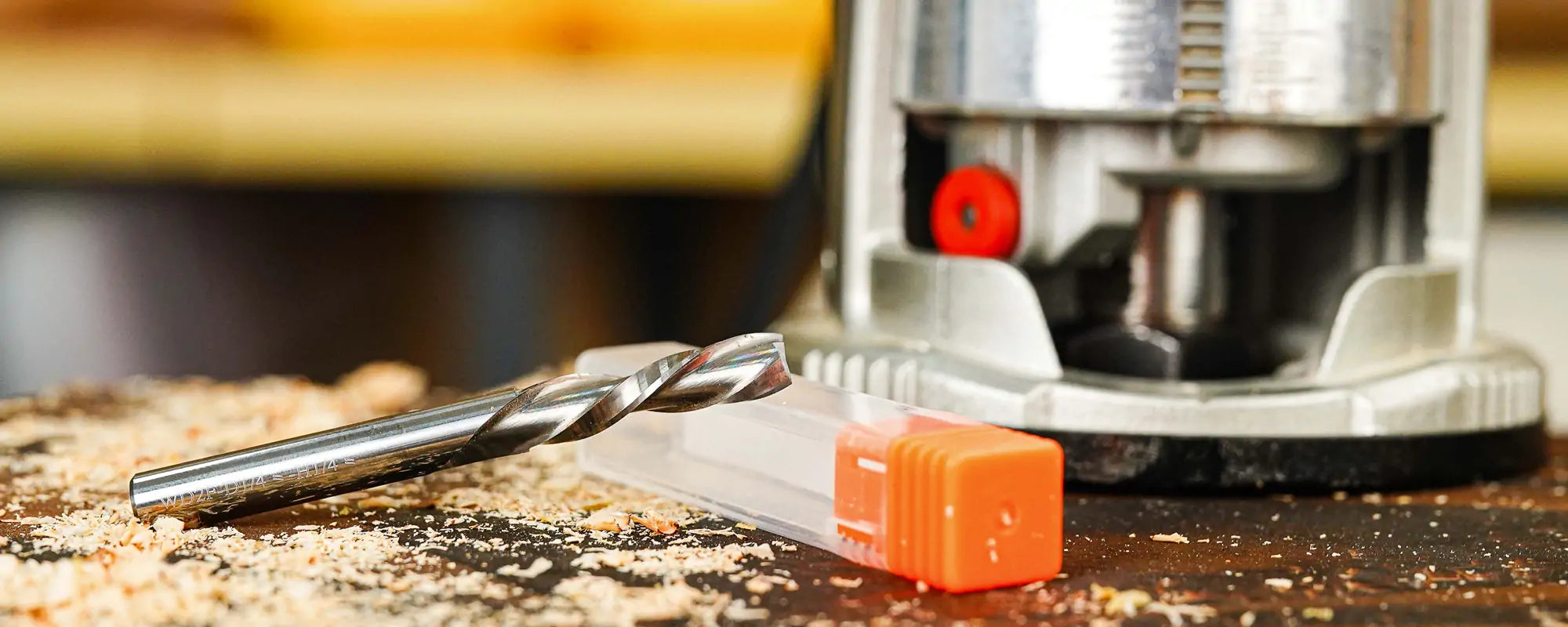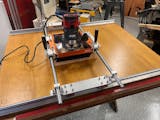Feeds And Speeds
‘Feeds and speeds’ is generally used to refer to ‘feed rate’, ‘slew rate’, ‘plunge rate’ and ‘spindle rpm’.
The feed rate represents how fast the machine will move the router bit though the material when cutting and is critical to get right for leaving a good quality cut edge.
Slew rate is the speed that the machine moves when above the material and is travelling between cuts. This is normally set to as high a level as possible in order to reduce cycle times.
Plunge rate is the speed at which the router bit is driven down into the material when starting a cut and will vary depending on the bit used and the material being processed. It is important not to plunge too fast as it is easy to damage the tip of the cutter during this operation.
The Spindle speed in rpm should be set to a value that is appropriate for the tool being used and the material being processed. Feed rate and spindle speed are inter-related. Sometimes it is possible to cut at a faster feed rate by increasing the spindle rpm. Similarly, if you cut at too low a feed rate or with too high a spindle rpm there is a risk of overheating the router bit and potentially burning or melting the workpiece.
Calculate The Right Parameters
Feeds and speeds are usually all set in the programming software that is used to create the machine program. There are many resources available to help determine suitable settings for particular material / router bit combinations.
These often provide a good starting point but can usually be further improved through a small amount of trial and error. Most machine controllers allow you to adjust the feed rate while a program is running and by listening to the sound the cutter makes this can be a good way of optimizing the parameters.
You can find SpeTool tool database at https://spetools.com/pages/spetool-tool-file-database, including mainstream CNC software such as Fusion 360, Vectric, Carveco and more.
The Do’s and Don’ts
Do …
Make sure you have the right router bit for the material to be processed
Look up recommended settings when programming for a new type of material of router bit
Check with your machine supplier if you aren’t achieving the expected quality or productivity
Make sure your collet is not worn and the tool is fitted correctly
Start with lower feed and plunge rates if not sure to avoid potential tool breakage or machine damage
Don’t …
Forget that doing some test cuts on a spare piece of material is a good way of checking settings before running your main program
Use worn or damage router bits which can cause overheating and poor cut quality
Continue cutting if you hear an unusual cutting noise. Pause the machine and check the router bit and settings
Cut too deep in a single pass. Sometimes it can be more efficient to use a higher feed rate and two or more passes rather than a single cut at a low feed rate





